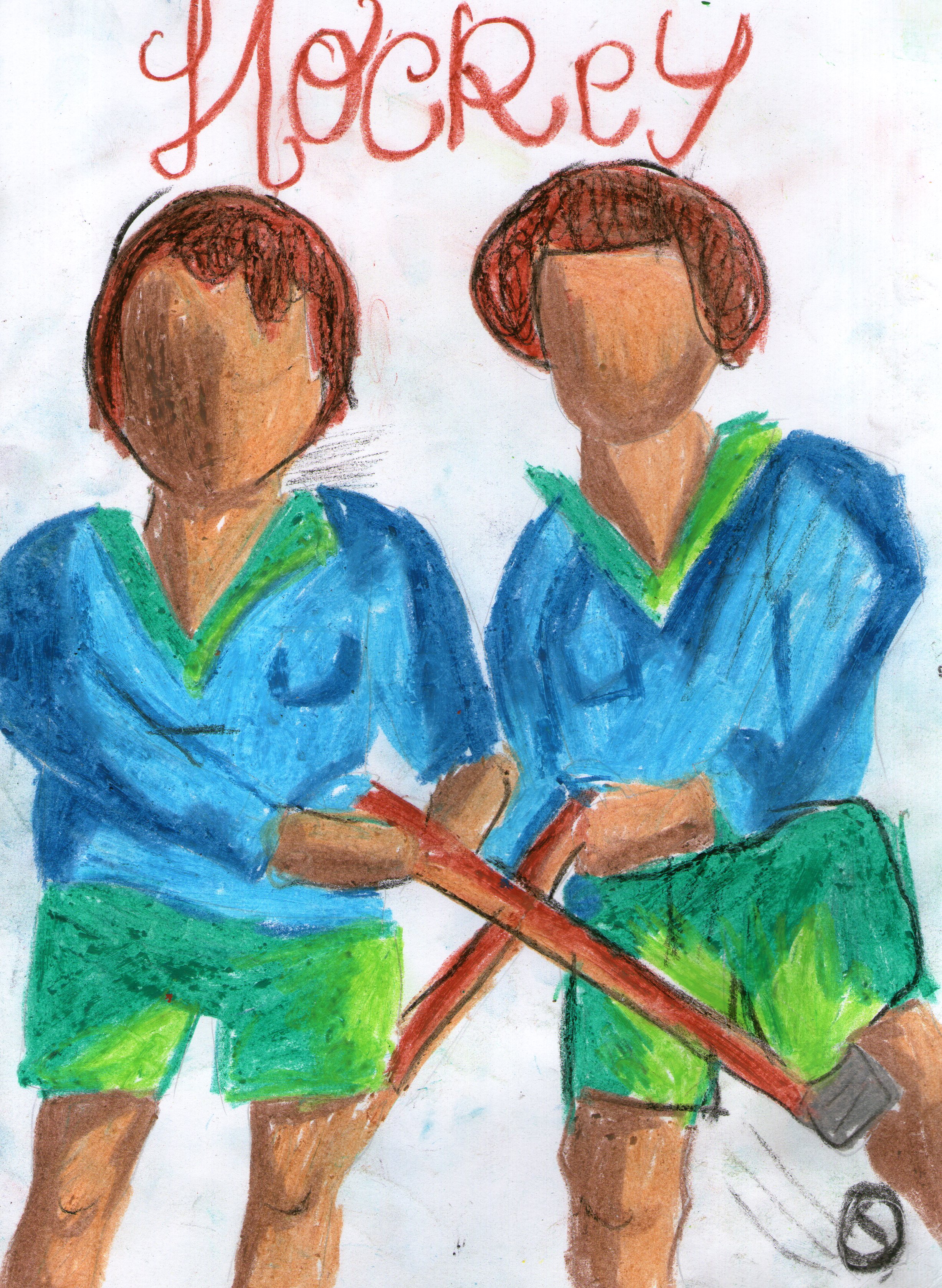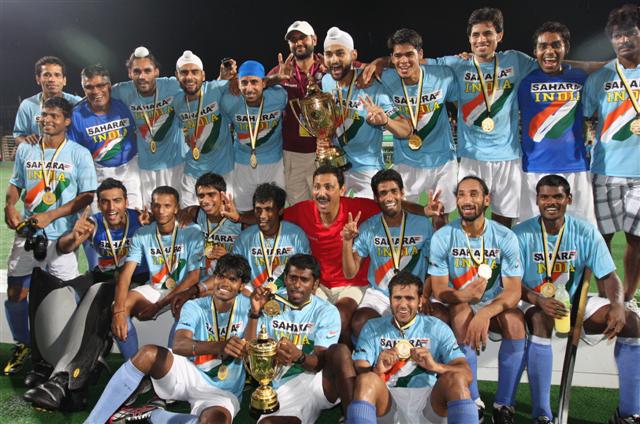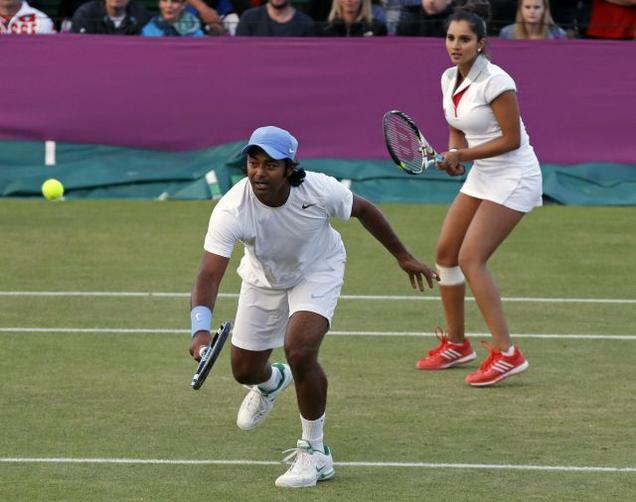|
|
A wide variety of sports is played throughout the country. These include kabbadi, kho-kho, pehlwani, and gilli-danda. British rule brought many popular sports in India including football, rugby union, cricket, golf, shooting, tennis, squash, field hockey, boxing, snooker, and billiards.
Field hockey is considered the national sport in India, and the country has won eight Olympic gold medals in field hockey, though cricket is the most popular sport.
|
| |
TRADITIONAL SPORTS OF INDIA |
| |
KHO-KHO
It also called a Game of chase.
It is played by teams of twelve players who try to avoid being touched by members of the opposing team, only 9 players of the team enter the field. It is one of the two most popular traditional Game of South Asia, the other being kabbadi.
Each team consists of 12 players, but only 9 players take the field for a contest.
A match consists of two innings. An innings consists of chasing and running turns of 9 minutes each.
Then, 1 team sits/kneels in the middle of the court, in a row, with adjacent members facing opposite directions.
The chasers can only run in one direction and cannot cut across the sitters unlike
All Runners have to do is keep on running, staying away from the chaser. |
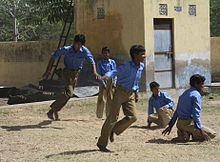 |
| |
PITTU
PITTU is a traditional INDIAN game played between two teams. It is played in many parts of India and is known by different names such as Nagolchu and Satoliyu.
The game requires a tennis ball and set of seven stones which can be stacked up to form a small tower.
The aim of the game is to be able to break the tower and then rebuild it before getting hit by one of the opponent.
Once tower gets hit, the hitters get distributed and when get chance come to make the tower by staying away from the protectors of tower. |
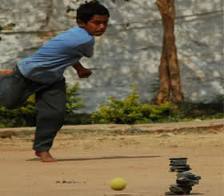 |
| |
GILLIDANDA
This is one of the most popular traditional games of India.
It includes batsman and fielders.
Batsman hits the gilli with danda and raise it to height as much as possible then hit it with great strength to a long distance and then fielder have to make him out by hitting the gilli with danda.
And if any fielder catches the gilli, batsman gets out. |
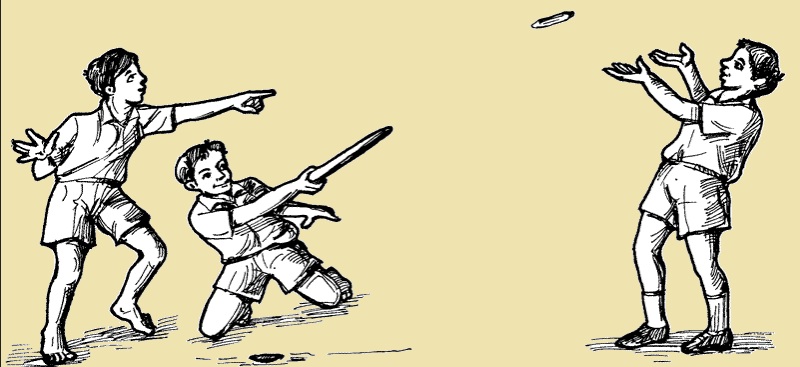 |
| |
MARBLES
Marbles are a traditional children’s pastime.
Players from the two teams take turns to shoot at the marble in the ring. Each shot must be taken with a knuckle touching in the ring surface.
Layers flicks the marble over the other marble to win .
If a shot fails to knock a marble outside the ring and players tolley finishes inside the ring, the tolley remains within the ring until that player’s turn comes around again.
IF a tolley is knocked out of the ring by the opposing team, it is “killed “ . |
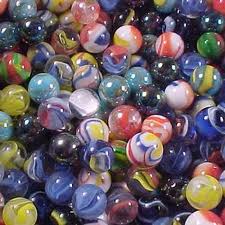 |
| |
BOAT RACE
The grand festival of Onam, is celebrated with great zest, in the picturesque state of Kerala, in the Malayalam month of Chingam. The most exciting part of this festival is the snake boat race, held at various places in the state, on the palm - fringed waters. The boats used in this thrilling contest of Vallamkali (boat race), are kite - tailed, and rather swan - shaped.
The most spectacular of the boat races, are those held at Aranmula, Champakulam and Kottayam. These races are keenly contested, and reflect a high degree of sporting prowess and excellence |
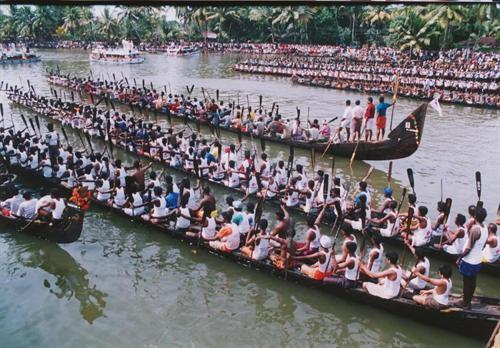 |
| |
KABADDI
Many Indian children play Kabaddi, which is a game similar to tag.There is no equipment. You just need four or more people to play.
HOW TO PLAY: Divide players into two equal teams. Each team is on opposite sides of the playing area. Whichever team starts has to pick a player to run to the other team’s side.
The runner takes a deep breath. The runner tries to tag the other team’s players without taking another breath. The runner has to keep saying “kabaddi-kabaddi” so he/she can’t take another breath.
The other players try not to get tagged. Those who get tagged try to catch the runner before he/she runs back to his/her side.
If the runner does not make it back to his/her side without taking a breath, the runner is out. If the runner doesmakes it back without taking a breath, then the players who got tagged are out.
Teams take turns sending runners. The team with the most players left wins. |
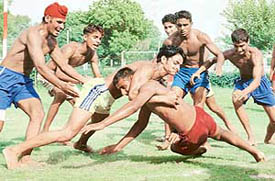 |
| |
POPULAR GAMES |
| |
HOCKEY
Hockey's birth place is Asia and Persia is credited with having devised it about 2000 B.C.
The game is played between 2 teams of eleven players (five reserve) each, on a 91.4X55 meter rectangular field. A spot called the penalty spot or stroke mark, is placed 6.4 m from the center of each goal. The objective of both the teams, is to play the ball into the goal, which will score them a point, and also prevent the opponents from scoring goal, the team with more goals after 35 minutes halves wins the game.
|
| |
|
| |
CRICKET
In India, the popular sport is cricket.
The game of cricket is played with a batsman, a wicket keeper, a bowler, and fielders.
The bowler rolls the ball toward the batsman. The wicket keeper stands behind the batsman. The batsman hits the ball with a bat and runs back and forth between the bowler and the wicket keeper to score runs. The fielders try to catch the ball to get the batsman out.
|
| |
|
| |
LAWN TENNIS
Lawn Tennis is a game played indoors or outdoors on a rectangular court by two persons (in singles) or by four persons (doubles). The players use rackets to strike a ball back and forth across a net. The object is to score points by hitting the ball out of the opponents reach or in such a way that he cannot return it successfully.
A player who gains 4 points with an advantage of two or more points over the opponent wins a game. 6 games make one set. Both in singles doubles, men compete in 3-set matches. A player who gains two out of 3 sets wins a match. To win the final match, however, a player who gains 3 out of 5 sets. In the other events (singles for women, doubles for women, and mixed doubles), the 3-set system is adopted; in this system, a player must gain two out of 3 sets to win a match.
To win a game, it is necessary to gain 4 points, with an advantage of two or more points over the opponent. In case of deuce, a player must gain two straight points to win the game. To win a set, it is necessary to win 6 games, with an advantage of two or more games. If the score is 5-5, the player who then gains two consecutive games wins. If the score is 6-6, the tie-break system is used to decide the winner.
|
| |
|
| |
CHESS
Chess is a very popular game and is widely accepted as one of the oldest games still played. Although it has a set of easily comprehensible rules, it requires a lot of practice to win against skilled opponents. This is because chess is a strongly strategy and tactically oriented game, without the amount of luck found in card or dice games. However, given that chess is still a game involving at least one human, blunders (mistakes in thinking/planning) do occur. Even so, chess is still a very fun game to play.
Each player has control of one of two sets of colored pieces, referred to by the nominal color of their respective pieces, i.e., White or Black. White moves first and the players alternate turns, moving one piece per turn. To win, a player must use his pieces to create a situation where the opponent's King is unable to avoid capture (a condition known as checkmate). Making a move is compulsory; it is not legal to "pass", even when having to move is detrimental. Play continues until a King is checkmated or a stalemate occurs.
|
| |
|
|

